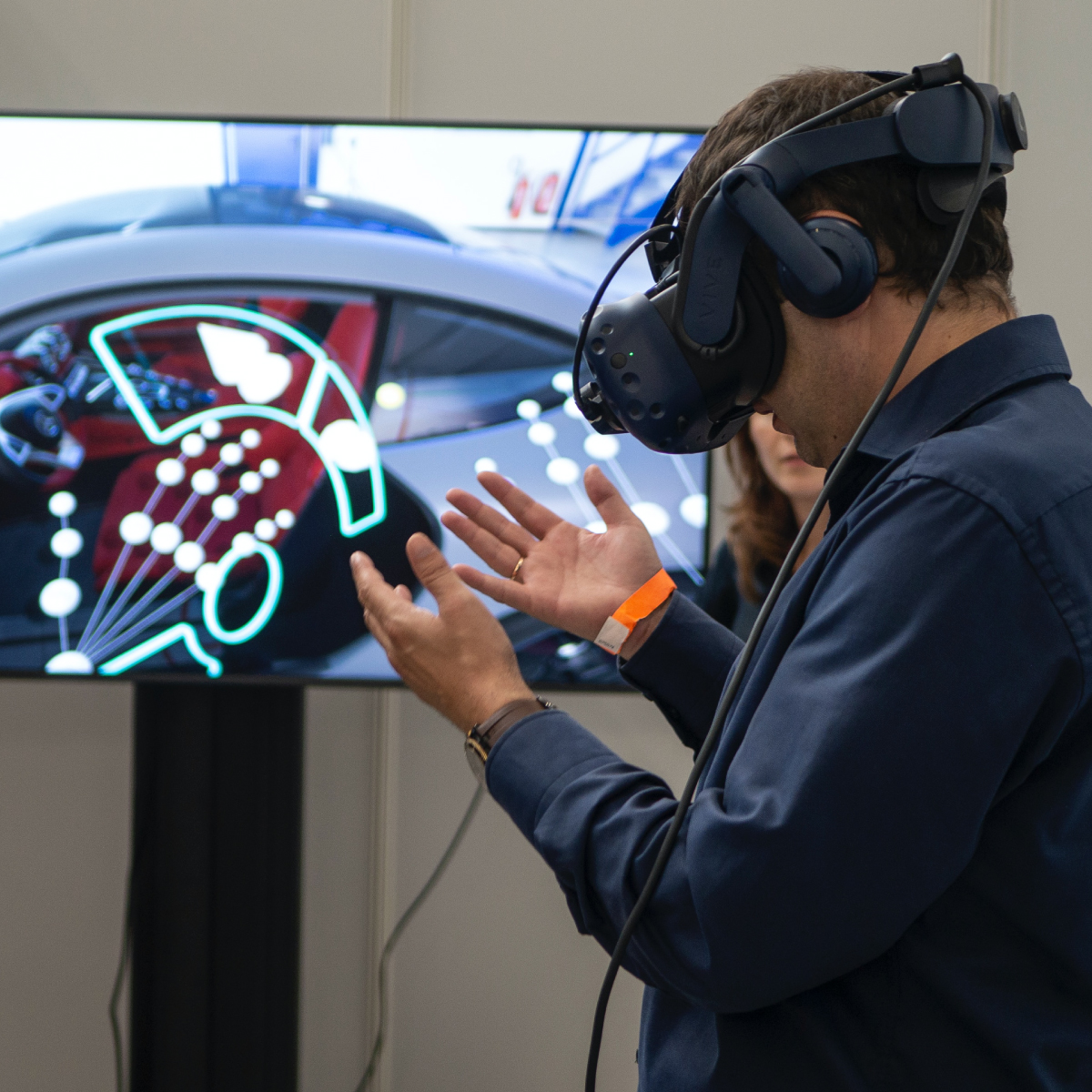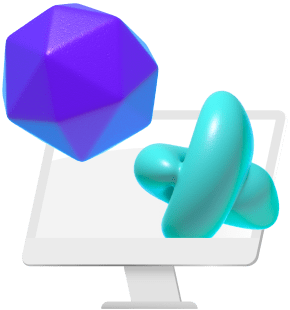In redefining the human digital experience, AR and VR technologies are paving the way toward a seamless integration of digital tools into our modern lives. Often referring to alternative realities and digital environments in general, AR and VR can be easily differentiated based on the levels of immersion that they can provide as well as how each realm is accessed.
Virtual Reality (VR) offers the user a fully immersive experience where a device is worn -restricting primordial senses and temporarily transporting the user into the virtual world. This experience allows the user to interact with the digital world in a first-person view via an avatar. Meanwhile, Augmented Realities (AR) allows a user to simultaneously participate in both the digital and physical realms through a handheld device. This type of virtual reality is considered balanced compared to VR and ideal for retail products as it allows people to easily engage or disengage whenever they want.
From real estate, service industries, and retail businesses alike, this ability of AR and VR tools to replicate real-world experiences and drive engagement via virtual platforms has made it a much-desired feature by businesses looking to gain a competitive edge in the market. A study showed that brands who took advantage of these AR capabilities for their digital concierges have observed a 94% increase in sales executed within their platforms. By partnering immersive experiences with quality products, brands can leverage digital tools to improve customer service and ensure high turnover and brand visibility.
Here are a few creative AR advertisements that are worth looking into for inspiration:
Christian Dior 🔗

Luxury brand Christian Dior jumpstarted its product launch with an AR lens in collaboration with Snapchat. People interested in sampling their newly launched sneakers collection can simply point and shoot toward their shoes with this Snapchat app and filter. Essentially a virtual showroom, the successful try-on campaign has seen a substantial increase in engagement with the number of views totaling 2.3 million and its online sales quadrupling post-launch.
LILY 🔗

Interactive screens allow commuters to check out the brand’s latest offerings right before they hop on to the Metro. Lily, a popular women’s brand wear in China propped up two smart mirrors located in the Shanghai Metro as part of its marketing efforts to promote their brand. Commuters simply need to stand still in front of the mirror and instantly mix and match their outfit by swiping the options from their collection. Prospective clients are also allowed to buy the outfits they like in real-time via the QR code generated after.
Supergoop 🔗 and OPI 🔗

Partnering with Snapchat, brands Supergoop! and OPI launched their new products with the help of beauty filters made available via the app. Supergoop!, a popular brand known for its sunscreen has recently launched a lip care line where users can virtually try on 4 of their lip shades through app filters. Meanwhile, nail polish company OPI launched eight new colors through the Nail Lacquer Lens filter -an app filter with Nail Segmentation technology. This feature detects fingers and makes the filter overlay accurate.
Lowe’s Holoroom 🔗

Lowe’s, a popular home improvement store has launched Holoroom, a VR-based experience where customers are ushered into a world of DIY and design. With the help of a VR headset, users can visit the store’s innovation lab and learn DIY skills from operating equipment up to tiling the bathroom. Initially an effort to help train onboarding employees, Holoroom is now hoping to appeal to a wider audience as well as help clients gain confidence in undertaking their DIY projects at home.
Thomas Cook: Try Before You Fly 🔗

One of the first few early adopters of VR technology, the Thomas Cook campaign launched its “Try Before You Fly” as a way to entice viewers to explore their destinations of interest first before booking. Taking clients from the panoramic view of its cockpit to various destinations around the globe, the VR challenge encourages participants to seek clues within their VR plane for a chance to win a holiday package.
Showcase Your AR/VR Advertisements with Vagon Streams
Enter the new era of immersive marketing and experience the future of AR/VR advertising with Vagon Streams. With Vagon Streams, your XR applications can stream on web from over 20 regions, effortlessly on any device.
Vogue x Snapchat: Redefining the Body🔗

It is not hard to see how the fashion industry can benefit from the advantages that AR can offer. With its recent event, fashion authority Vogue launched exhibitions by fashion designers with AR in mind. Developed with Snapchat, were allowed to go through each exhibit and bring to life the patterns and designs as well as to virtually try it on with the help of the app’s filter.
PokemonGo 🔗

A mobile-based game app that embeds digital assets within physical environments, PokemonGO encourages people to access the Pokemon world with the help of a mobile camera. Perhaps one of the most popular AR-dependent games across the world, PokemonGO continues to be a popular mobile game year after year. More recently, the developers of the game have also been exploring creating a VR version of the game through the help of Microsoft HoloLens.
Jumanji: The Next Level 🔗

This multi-platform promotion for the movie Jumanji: The Next Level by Sony uses location-dependent AR to transport the viewers to the world of_ Jumanji_ by embedding effects to real-world destinations. Simply go near specific locations and watch these buildings transform by using the Snapchat filter. Alternatively, audiences from other parts of the world can still enjoy the experience through a Jumanji-inspired running game.
Diageo “Legends Untold” 🔗

With its annual limited whisky collection, Diageo started its foray into AR with “Legends Untold”. Boasting a set of rare and unique spirits, “Legends Untold” follows a story of 8 mythical beasts to complement the origins and story behind each drink. Illustrated by Ken Taylor (Mad Max Fury, Metallica), each mystical artwork is accompanied by a scannable QR code at the back, with each linked to the whisky’s background as well as some tips and recommended pairings.
Reese’s Puffs x KAWS 🔗

KAWS is known to collaborate with various brands globally, with this collaboration with General Mill’s Reese’s Puffs a first in its portfolio. Reese’s Puffs, a popular peanut butter-flavored breakfast cereal collaborated with KAWS in creating an AR-themed line for cereals, producing limited edition boxes as well as a game specially designed for this campaign. With the QR printed in the box, players can either use the code to turn the cereal box into an AR world or access the game and help keep the characters from drowning in a puddle of milk.
PizzaHut: Pac-Man 🔗

Using WebAR, Pizza Hut and Bandai Namco came together to re-launch the classic PAC-MAN® arcade game. Pizza Hut showcases a creative advertising strategy by merging modern technology with a world-renowned game, offering customers an interactive experience. By scanning the QR code integrated into the pizza box design, users can easily join the gaming experience. With the touch-sensitive joystick on the screen, millions of customers can immerse themselves in the excitement of competition. Through augmented reality, the combination of the game’s original visuals and animated gifs creates a nostalgic arcade experience. This innovative approach enables Pizza Hut to enhance brand awareness by providing customers with an extraordinary experience.
Vans “This Ties Us Together” 🔗

Vans offers a special AR experience to celebrate the holiday spirit and connection with the slogan “This ties us together.” In this experience, Vans customers begin by downloading a dedicated AR application to their smartphones. Once opened, users have the opportunity to explore a virtual world around them. Vans’ shoes and clothing become visible in various holiday scenes and symbols, allowing users to try on products virtually and explore different combinations.
Invesco QQQ & March Madness 🔗

March Madness, in collaboration with the NCAA’s official ETF, the Invesco QQQ ETF, and NBA legend Grant Hill, organized an augmented reality basketball competition. This experience begins by tapping on the floor of your living room using your smartphone to bring Grant Hill’s hologram into your space. Each player starts with a $10,000 starting balance, and their digital balance increases with each successful shot. After 30 seconds, players are presented with their total digital balance and a calculation showing how much they would have earned if they had invested in the Invesco QQQ ETF ten years ago. This provides an exciting opportunity to highlight the potential value of the Invesco QQQ ETF, which provides access to leading companies in the automation and technology sectors.
Lego AR Studio 🔗

Lego AR Studio is a mobile application that brings Lego’s augmented reality experiences to the mobile platform. This application allows users to create and interact with digital Lego structures in real-world environments. Users can scan their surroundings using their smartphones or tablets and place virtual Lego pieces in this environment, build their own structures, and customize them. Additionally, they can enjoy fun games available within the app. Lego AR Studio provides an entertaining and creative experience, particularly for children, while also supporting the learning process by integrating digital and physical gaming worlds.
Nike SWOOSH HIGH 🔗

Nike, pioneering a collaboration that created an immersive “Swoosh High” experience in New York, became the first brand to launch Snapchat’s AR Mirror. This initiative allowed visitors to virtually try on clothing and take advantage of in-store discounts using augmented reality, proving to be quite captivating. To celebrate the arrival of Snapchat x Nike Air Force 1s, a special environment was set up where shoppers could use a custom-made AR mirror to test out exclusive athletic shoes. By directly integrating AR technology into their stores, Nike sets an inspiring example of how augmented reality can strengthen other aspects of their business strategy.
Conclusion
Building a brand relies heavily on consistent and effective marketing efforts. For some that would mean targeted markets while for others, viral and sensational engagements. With the help of tools such as AR and VR, brands can easily engage and immerse people into experiences that can help in driving traction toward their brand. Both Augmented Reality (AR) and Virtual Reality have the power to influence how people buy things, experiences, and services, and eventually reshape our realities. Even prominent brick-and-mortar businesses are keen to have a piece of the digital market, ensuring the bright potential of innovations with alternative realities in the future.
Advertising of today is no longer confined to specific places in our society, it has become moving and roving across our daily lives- from the phones we carry in our pockets up to the laptop we use for our work, it has become inevitable accompaniment in our digital existence. That is why, choosing the right platforms to stream your advertisements or launch your brand’s VR and AR campaigns is of great importance.
Small differences such as incompatibility can make or break a brand’s campaign and reputation, which is why partnering with the right services can truly make a difference. With platforms like Vagon, you are guaranteed a seamless transition between devices regardless of what equipment you use. Simply access the link and quickly integrate with your team or keep tabs on your campaigns even if they are heavy AR and VR technologies.




